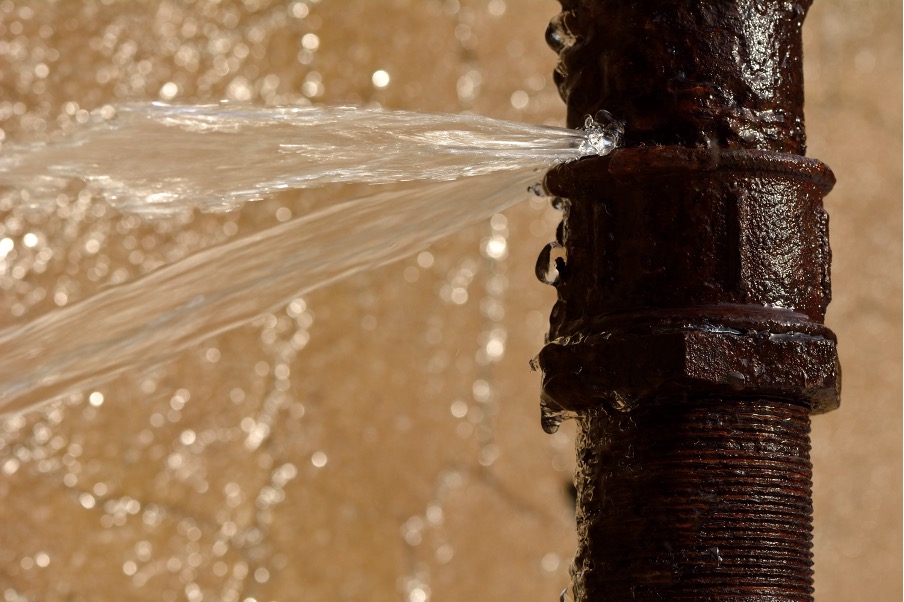6 Ways to Discover Hidden Water Leaks in Your Residence
6 Ways to Discover Hidden Water Leaks in Your Residence
Blog Article
The article author is making several good points about Locating water leaks as a whole in the article followed below.

Early discovery of leaking water lines can mitigate a prospective catastrophe. Some tiny water leakages may not be visible.
1. Check Out the Water Meter
Every house has a water meter. Checking it is a guaranteed manner in which aids you uncover leakages. For starters, switch off all the water sources. Make certain no person will certainly flush, make use of the faucet, shower, run the washing device or dishwasher. From there, go to the meter and also watch if it will change. Because no person is using it, there need to be no activities. That indicates a fast-moving leakage if it moves. If you identify no modifications, wait an hour or two as well as inspect back once more. This suggests you may have a slow leak that could also be below ground.
2. Examine Water Usage
If you identify unexpected changes, despite your intake being the exact same, it implies that you have leaks in your plumbing system. An abrupt spike in your bill shows a fast-moving leakage.
At the same time, a consistent increase every month, despite the same routines, reveals you have a sluggish leak that's also slowly rising. Call a plumber to completely check your property, particularly if you really feel a warm area on your flooring with piping underneath.
3. Do a Food Coloring Test
When it comes to water consumption, 30% comes from toilets. If the color somehow infiltrates your dish throughout that time without flushing, there's a leakage in between the container and also bowl.
4. Asses Exterior Lines
Do not neglect to inspect your outside water lines too. Should water permeate out of the link, you have a loosened rubber gasket. One small leak can waste loads of water and increase your water expense.
5. Examine and Assess the Scenario
Homeowners should make it a habit to inspect under the sink counters and also even inside cupboards for any kind of bad odor or mold and mildew development. These two warnings show a leakage so prompt interest is required. Doing routine examinations, also bi-annually, can save you from a significant issue.
Examine for discolorations and deteriorating as the majority of pipes and home appliances have a life expectancy. If you think dripping water lines in your plumbing system, do not wait for it to rise.
Early discovery of leaking water lines can reduce a prospective catastrophe. Some small water leakages might not be noticeable. Examining it is a proven means that aids you uncover leaks. One tiny leak can waste lots of water as well as surge your water bill.
If you think leaking water lines in your plumbing system, don't wait for it to escalate.
How to Know If Your Home Has a Hidden Leak
Water Meter Reveals Inexplicable Water Usage
If you’d like to test whether or not there’s a leak somewhere in your home, you can do this using your water meter. Here is how to conduct the test:
Don’t use any water in your home for at least 30 minutes; this also means not turning on faucets or water-using appliances.
Go outside, and check your water meter for activity.
If your water meter shows that there was activity, even though no one was using any water, this proves that there is a leak in your home.Visible Mold or Mildew Growth
Leaks behind walls create moist, dark environments that allow mold and mildew to grow and thrive. Eventually, you might see mold growth forming on the wall closest to a hidden leak.
If mold is growing in an area that receives a high amount of moisture, such as a bathroom, it may simply be an indication that better ventilation is needed. However, if you see mold growth on a wall or the ceiling in an area where you would not expect, you probably have a hidden leak.
Musty, Mildew Odor
Sometimes you might not be able to see the mold or mildew that is growing as a result of a leak. However, the smell can give the problem away just as easily. If you catch a whiff of something musty, there’s a good chance that old water is collecting somewhere in your home that you can’t see.
Stained/Warped Walls, Ceilings, or Floors
When your home soaks up water, a variety of red flags can become visible, including ceiling stains, bubbling drywall, warped walls, and sagging floors. While these issues can be caused by excess humidity, they can also be signs that a pipe or plumbing connection has started leaking behind your walls.
Inexplicably High Water Bill
After a while, you get a general sense for what your water bill should be. If you own a pool or sprinkler system, your bill will tend to be higher during summer. However, if you receive a water bill that seems especially high, and you can’t figure out what caused it, then you may have a hidden leak somewhere that’s increasing your bill.
https://www.plumbingjoint.com/blog/2019/july/how-to-know-if-your-home-has-a-hidden-leak/

We were made aware of that report on Detecting hidden plumbing leaks through someone on our other website. If you enjoyed reading our page please be sure to share it. I truly appreciate reading our article about Locating water leaks.
Report this page